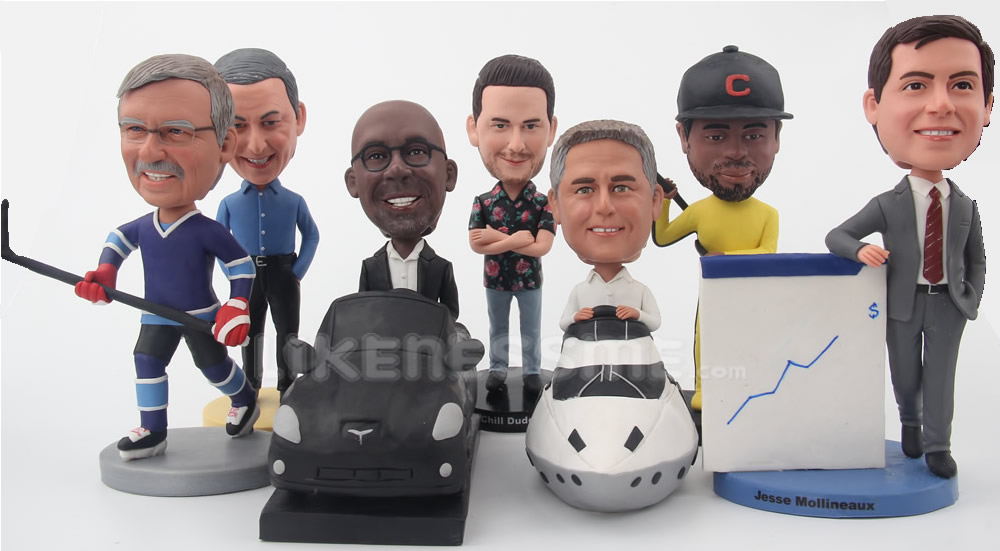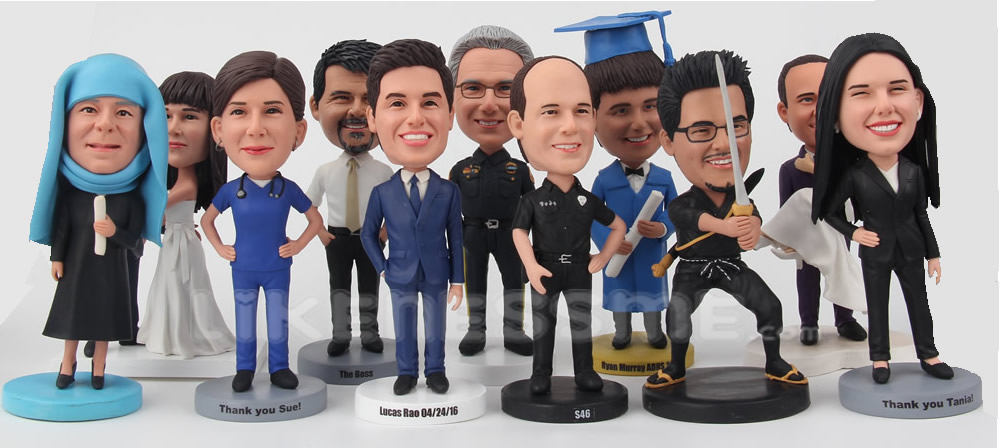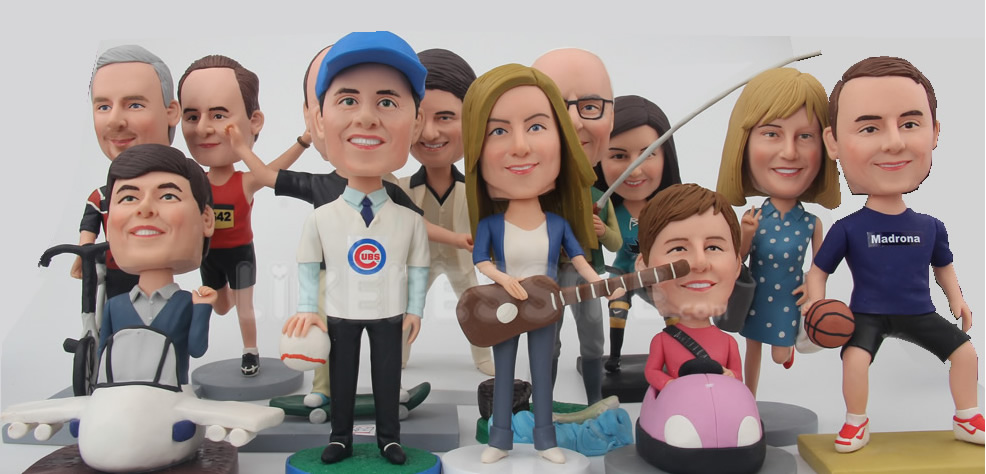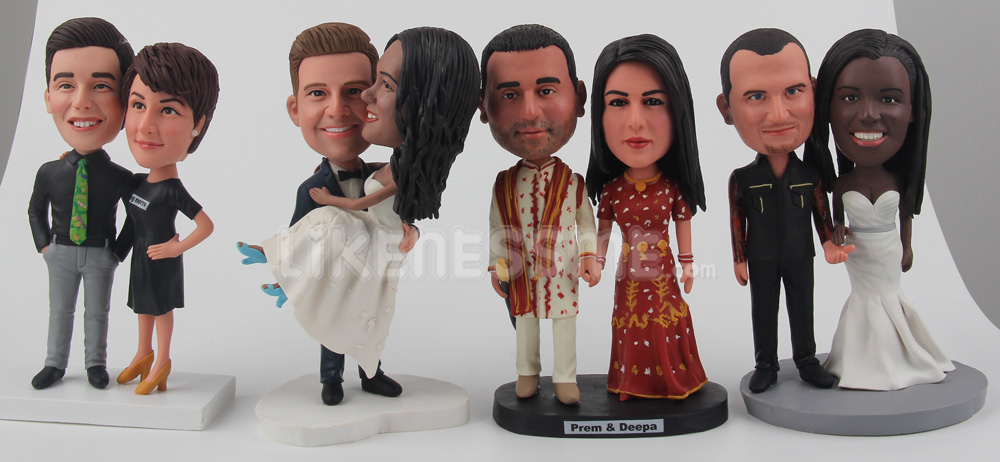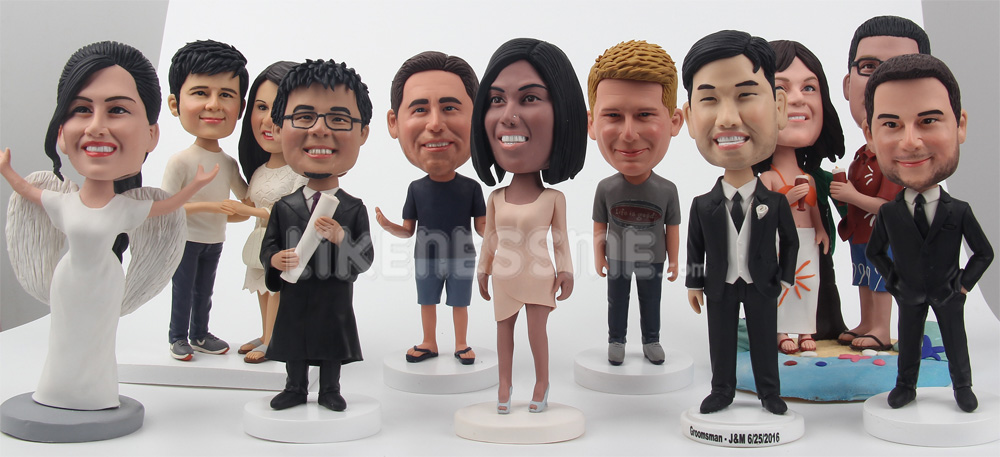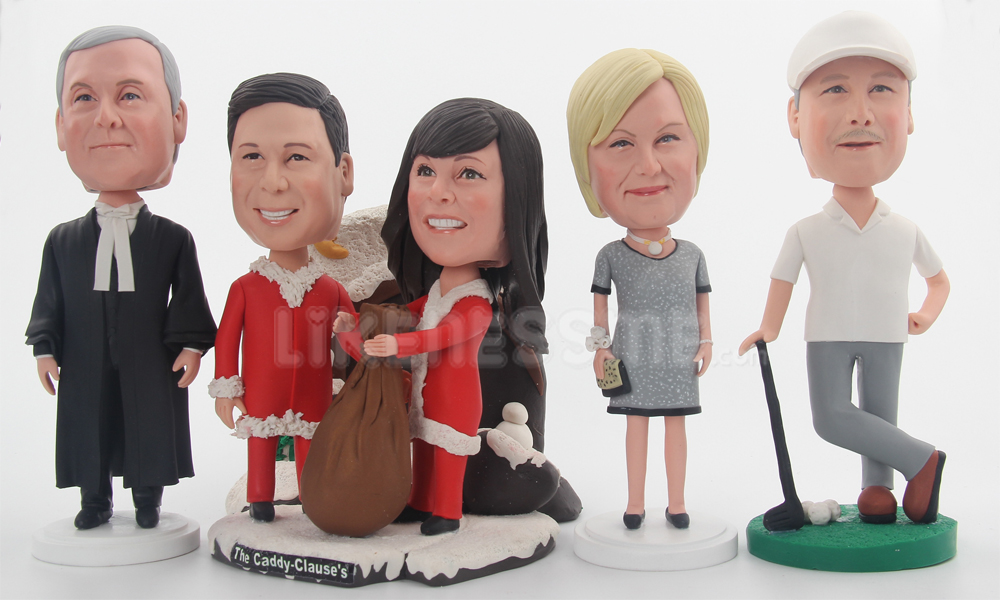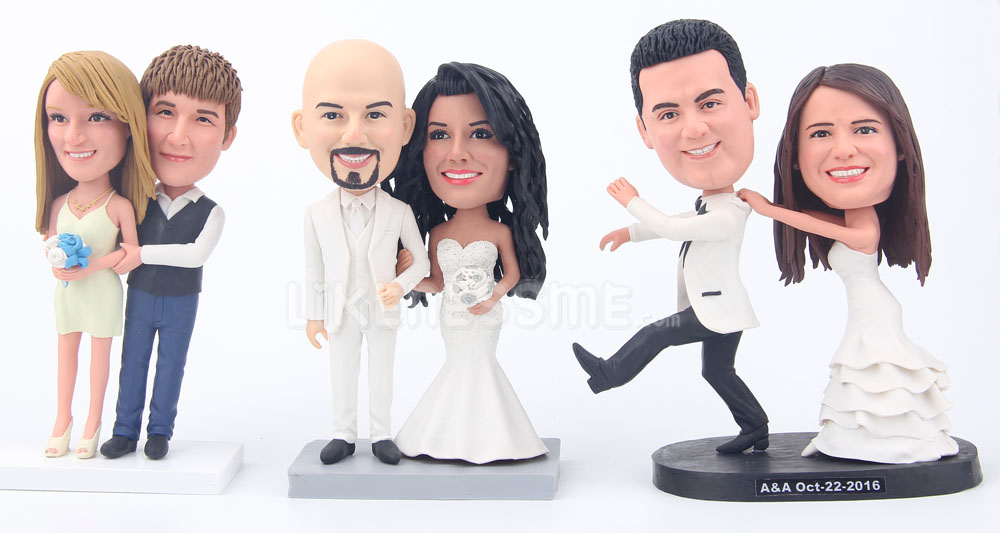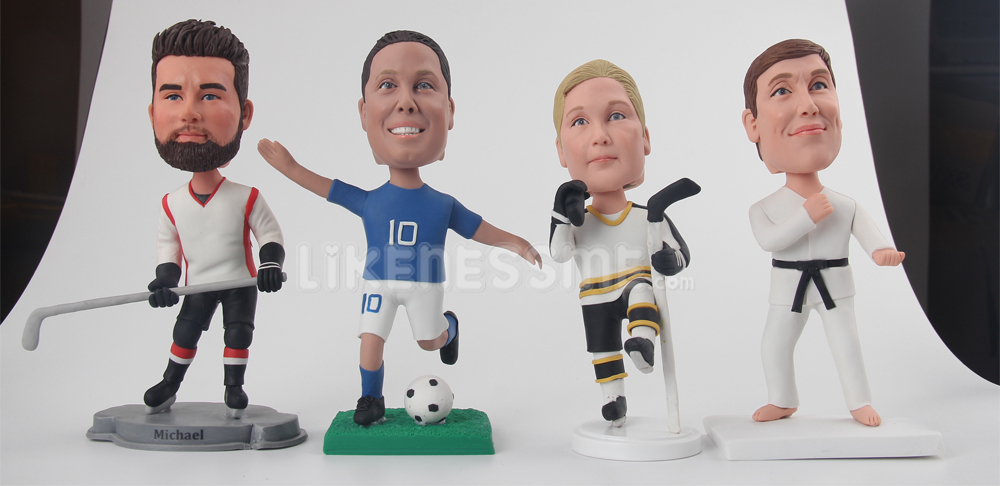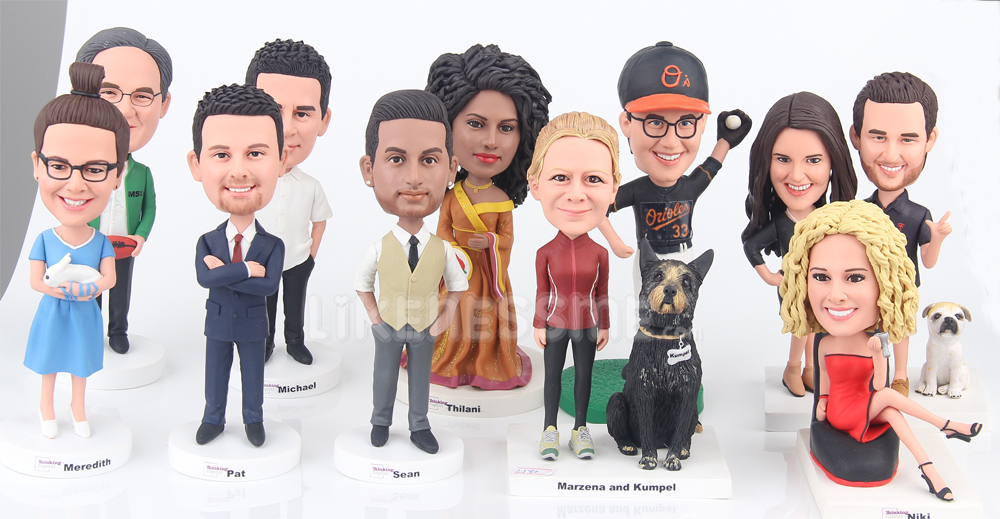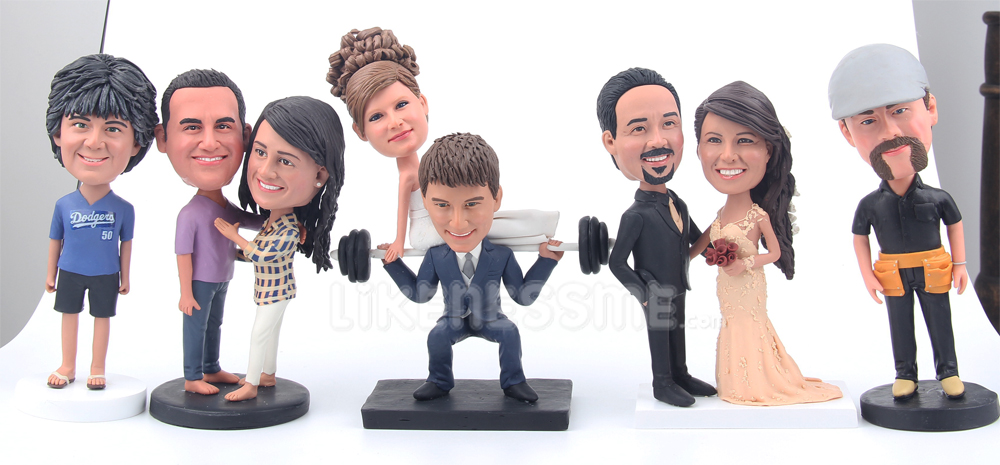The bobble head doll is one of the most recognizable and likable collectible toys because its charm lies in its simplicity. Even the name is as straight-forward as you can get, defining the whole essence of this beloved figurine, also named nodder or wobbler.
Bobble heads have a string or a hook connecting the head to the body, causing the head to bobble when lightly touched. Did we mention that the head is also oversized? A lot of people love these silly figurines and their popularity expanded quickly in the last decade with the customizable products taking over.
This lovely collectible has an equally playful history and it’s interesting to see how popular culture came to embrace them.
The original bobble head dolls
The concept of a doll with moving parts goes back in Antiquity. Chinese and Japanese string dolls were manufactured long before the modern bobble head and they had nodding heads, imitating the real-life courtesy nod. These dolls were carefully crafted out of porcelain or wood and were highly prized by European aristocrats. India also had similar figurines, the dancing Thanjavur dolls, traditionally made from paper mache or terracotta.
During the 18th century, a more modern version of bobble head figurines was made in Germany, usually representing animals, human and folklore creatures. These dolls were called “nodders” and they seem to have been well-known over the continent. The earliest reference to these dolls can be found in Nikolai Gogol’s short story “The Overcoat”, which describes its main character as having a neck “like the necks of plaster cats which wag their heads”.
Association of bobble heads with sports
Various sources date the first sports-related bobbleheads to the 1920s when the New York Knicks baseball team supposedly released them. This theory is not supported by evidence, as the team was formed in 1946.
The next mentions of baseball player figurines refer to the first mass-produced bobble head for the Major League Baseball World Series in the ‘60s. The figurines were imported from Japan and were made of paper mache, a frail material that does not keep well over time. Although the dolls represented specific baseball players and had different team uniforms, the faces were the same for all.
Customizing became more detailed when the manufacturers started using ceramics instead of paper mache. Over the next decades, the production of bobble heads extended from sports events to more niches, like cartoon characters or famous musicians. Some of the most valued antique bobble heads represent The Beatles and were used in their album promotions.
End of century hiatus
In the early ‘70s, the bobble heads lost their popularity among collectors and were replaced by other things, like lunch boxes, video games, and action figures. By the time they made a comeback, technology advanced and allowed the bobbleheads to be reinvented into what we know today – lightweight, resistant items with a high possibility of customization.
The comeback
In 1999, baseball reintroduced bobblehead giveaways for the San Francisco Giants game on May 9th, where 35,000 dolls of Willie Mays were offered to the fans and brought the bobble head back into the spotlight.
The trend quickly spread its wings with other teams launching custom bobble heads, and so the new craze began. The nodding figurines were shortly used by many more companies as promotional items and their value began to lower because of the over saturation of the market. McDonald’s had a Ronald McDonald bobble head, and even The Osbournes launched Ozzy dolls as promotional items.
The modern bobble head doll is most commonly made of plastic, resin or polymer clay. The manufacturing process often uses molds and allows a certain model to be mass-produced. New dolls are also highly customizable with different bodies, accessories and facial features. This led to the birth of a new niche in the market, bobble dolls as gift items or anniversary items.
The present day variety of bobble head dolls
Bobble head animals continue to be one of the most popular varieties, as they are commonly placed on the car’s dashboard and allow people to express their love for their favorite pets. Bobble head dogs are a pop culture staple, often being spotted in personal cars.
Character-inspired figurines also took over the world of cinema, TV, and gaming. Today, every comic book store holds bobble head figurines representing beloved characters. One of the secondary trends is that of the mini-sized bobble head, often having a largely disproportionate head and cute, cartoonish features.
That doesn’t mean that the manufacturing of these dolls has shifted entirely to plastics and moldable materials. There are still artists that create hand-made bobble head reproductions with a high level of fidelity. Giving someone a bobble head with their appearance is a popular thing and many companies offer a wide range of options to their clients. We are such a company, if you have any questions or requests regarding bobbleheads, don’t hesitate to get in touch!







